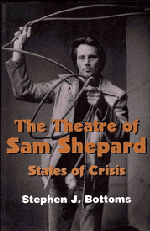5 - Strychnine in the Gut
Curse of the Starving Class (1977) and Buried Child (1978)
Published online by Cambridge University Press: 01 June 2011
Summary
In the middle of this diverse, experimental period of the mid- to late 1970s, Shepard took his writing in an unexpected new direction. When Curse of the Starving Class premiered in London in 1977, it was seen by many as marking a shift away from avant-garde pyrotechnics toward more a conventional dramatic form. Built around a conventional three-act structure and set in a recognizable domestic location (a farmhouse kitchen), it dealt with a family made up of familiar types (absent father, world-weary mother, anguished son, rebellious daughter) enacting a series of personal conflicts. When Buried Child, which featured very similar basic components, appeared the following year at the Magic Theatre, it was seen as confirming the notion that Shepard was finally moving toward the mainstream of “serious” American drama, adding to the roll of family plays by O'Neill, Odets, Miller, Williams, and so forth. In 1979 Buried Child was rewarded with that ultimate accolade of the established theatre, the Pulitzer prize. Certainly these pieces have many elements in common with their famous predecessors. Yet even as the subject of family is embraced in an apparent search for a sense of rooted, stable identity, these are distinctly postmodern dramas, characterized by discontinuity, pastiche, and a sense of insoluble tension in both family structure and dramatic form. Shepard, far from making some belated bid for mainstream respectability, was bringing his sense of experiential crisis home to roost.
- Type
- Chapter
- Information
- The Theatre of Sam ShepardStates of Crisis, pp. 152 - 181Publisher: Cambridge University PressPrint publication year: 1998



